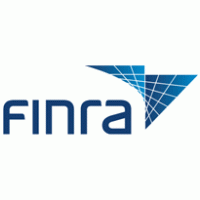ESG investing - some handy tips from FINRA
Chris Hamblin, Editor, London, 15 January 2020

There is no formal definition of an ESG (Environmental, Social and Governance-related) investing style and people often use various names, such as sustainable investing, socially responsible investing and impact investing, interchangeably to describe it.
Tips for investors and, by extension, wealth managers
The following tips are aimed squarely at investors, HNW and otherwise, but they apply at one step removed to wealth managers.
- Know your investment goals and risk tolerance. Any ESG investment should mesh with your wider investment goals. All investments carry some degree of risk, so explore the business and market risks associated with your investment.
- Understand the ESG fund's investment criteria by looking in the fund's prospectus. Some funds use an exclusionary investment process when making investment choices (for instance, omitting stocks of companies that are in particular sectors such as tobacco or alcohol). Others use an inclusive process (for instance, including companies that meet certain ESG criteria by maintaining a minimum number of female board members). Some funds focus on a range of ESG areas, others might focus only on one.
- Be on the lookout for 'greenwashing.' A close reading of the fund prospectus or bond offering is a good place to start. Track any environmental milestones that the various companies in a fund or bond issuer might report. Use your own judgement; would you consider a bond to build a dam "green" if the underlying project included the installation of a wind farm?
- Check to see whether each investment of the ESG fund is in line with your own morality. While you're at it, check whether you already own any of the investments held by the fund, perhaps through another fund or as individual stocks.
- Diversify. For some unexplained reason which might have something to do with the spread of risk, FINRA does not like the idea of an HNW investor holding all his ESG assets in a single ESG fund — especially a single 'green bond' or a fund that might concentrate only on clean energy. It prefers a mixture of stocks, bonds and cash, or a diverse range of holdings in the same asset class or the use of the same style of investment. A fund of green bonds is preferable to one green bond.
- Be prepared for 'criteria inconsistency,' the fact that one portfolio manager or bond issuer may not mean the same as another by the term 'ESG.'
- Be on the lookout for 'green' scams. This is not the same as 'greenwashing.' Here, one must be very wary of offers that dangle the promise of large gains from ESG initiatives, particularly if those offers involve small, thinly traded penny stocks, because they may be fraudulent. It is a good idea to walk away from unsolicited offers that come by post, social media or telephone calls.
- Always verify the identity of the person you are dealing with 'independently' and find out whether the seller of the investment is licensed to do business with you by using FINRA's BrokerCheck at https://brokercheck.finra.org/.
- Look beyond marketing materials. Never rely on them solely, because they could be exaggerated and place a disproportionate emphasis on ESG criteria. A more comprehensive picture of the investment can usually be found in the company's disclosures on EDGAR, the Securities and Investment Commission's database. The small print often tells a tale that the marketing or promotional materials do not.
- Know and compare fees. ESG funds are unusually difficult for fund managers to construct and manage and might therefore cost more in fees than passive funds. Pay attention to the annual expense ratio for an ESG fund. Look at such associated fees as sales charges, continuing fund expenses, how much it costs to buy or sell the security, or assets-under-management fees. Use FINRA's Fund Analyser to compare fund expenses. FINRA's BondFacts shows you last-sale bond prices and more.












